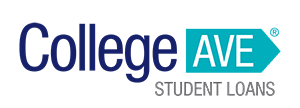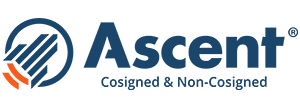If you’re one of the millions of student loan borrowers that hasn’t had to make payments due to the federal student loan freeze, you may be feeling anxious about repayment starting again in 2022.
On average, student loan borrowers pay $393 per month toward their debt, so your payments can eat up a significant amount of your take-home pay.
If you’re worried about making ends meet or simply want more breathing room in your budget, here’s how to lower student loan payments, and what you should consider before reducing your payment.
How to Lower Student Loan Payments
If your payments are too high, you run the risk of missing payments. Besides late fees, missed payments can also lead to delinquency and default. In fact, the Federal Reserve reported that 18% of student loan borrowers were behind on their payments before the student loan freeze went into effect, meaning a large percentage of borrowers may struggle with their payments again very soon.
Reducing your payments can make your loans easier to manage. Depending on the type of loans you have and your situation, you may be able to use one of the following ways to lower student loan payments:
1. Enroll in an Income-Driven Repayment Plan
If you have federal Direct Loans, one option is to enroll in one of the four income-driven repayment (IDR) plans.
- Income-Based Repayment
- Income-Contingent Repayment
- Pay As You Earn
- Revised Pay As You Earn
If you apply and are approved, your repayment term will be extended from 10 years to 20 or 25, and your loan servicer will calculate a new monthly payment based on the longer term and your discretionary income. Depending on your family size and income, you could get a much lower payment; some borrowers even qualify for $0 payments.
You can apply for an IDR plan by contacting your loan servicer or by filling out the online IDR application. You can choose which plan you want, or you can check the box that allows your servicer to enroll you in the plan that gives you the lowest possible monthly payment.
2. Use a Direct Consolidation Loan
Another option for federal loan borrowers is to consolidate your loans with a Direct Consolidation Loan. Your loans will remain in the federal loan program, so you’ll still be able to utilize federal loan benefits. But, your loan term will be extended up to 30 years, and you can elect to enroll in an IDR plan to further reduce your payments.
Direct Consolidation Loans are especially helpful if you have loans that are ineligible for IDR plans, such as Parent PLUS Loans. After consolidating your debt, your loans will be eligible for an IDR plan, helping you lower your payments.
Warning: If you’ve made payments toward IDR loan forgiveness or PSLF, you’ll lose credit for those payments and the clock will restart. Keep that in mind if you were hoping to have a portion of your loans forgiven.
If you decide that loan consolidation is right for you, you can apply for a Direct Consolidation Loan online.
3. Opt for an Alternative Payment Plan
If you have older federal loans or private student loans, you may be eligible for an alternative repayment plan that can lower your payments.
With federal loans, such as Federal Family Education Loan Programs accounts, you can enroll in one of the following plans:
- Extended: With an extended repayment plan, your repayment term is changed to 25 years. Your payments can be fixed, or they can be graduated. If you opt for graduated payments, your payment amount will increase every two years, regardless of your income.
- Income-Sensitive: Under this plan, your payment is calculated based on your income, and your loan is fully repaid within 15 years.
- Graduated: With graduated repayment, your loans are paid off over 10 years. Your payments start out low and increase every two years, even if your income stays the same.
If you have private student loans, you aren’t eligible for federal repayment plans. However, some private lenders have alternative payment options for borrowers experiencing financial issues.
Whether you have private or federal student loans, contact your lender right away if you’re experiencing any issues affording your payments. You can discuss your options and find out if you’re eligible for another repayment plan that can help you avoid student loan default.
4. Request Forbearance
If you’ve lost your job or have become seriously ill, you may be able to postpone your payments through student loan deferment or forbearance.
With federal loans, there are multiple forbearance and deferment programs. Depending on your situation, you could postpone your payments for up to three years.
If you have private loans, forbearance policies vary by lender. For example, College Ave offers up to 12 months of forbearance for borrowers experiencing financial hardships. By contrast, Ascent allows borrowers to enter forbearance for up to 24 months.
Contact your lender right away to see if you’re eligible for student loan forbearance or deferment.
5. Refinance Your Loans
If you have private loans or a mixture of federal and private loans, another way to lower your student loan payments is to refinance your loans. With student loan refinancing, you combine your loans into one by taking out a loan from a new lender for the total amount of your existing debt.
If you have a good credit score, have a stable income and a low debt-to-income ratio — or have a co-signer willing to help you — you could qualify for a loan with a lower rate or extend your repayment term to get a lower payment.
For example, Sue had $35,000 in student loans at 6% interest. On a 10-year repayment plan, her payments were $389 per month. Sue decided to refinance her loans, and she qualified for a 15-year loan at 6% interest. With a longer loan term, her payments dropped to $295 — a savings of $93 per month.
The downside is that Sue would pay more in interest due to a longer loan term. But to make her payments more affordable, that tradeoff may be worth it.
You can use the student loan refinance calculator to find out how much you can lower your payment by refinancing your debt.
The 2 Best Companies to Refinance Student Loans
Our Top-Rated Picks for 2024 Offer Low Rates and No Fees

What Should I Consider Before I Lower My Student Loan Payment?
Freeing up more cash sounds great. However, lowering your student loan payments isn’t always a good idea. Before entering into a new repayment plan, postponing your payments, or requesting forbearance, consider these pros and cons.
Pro: You Can More Easily Afford Your Payments
Clearly, the main perk of lowering your payments is that you can more easily afford them every month, reducing the risk of falling behind on your payments, damaging your credit, or entering into default.
Pro: You Free Up Money for Other Expenses
Depending on your situation, you may want to get more room in your budget to pay for other expenses, such as rent or transportation. By lowering your payments, you can more easily afford other essentials, or even improve your living quality by upgrading to a better apartment or a more reliable vehicle.
Pro: You Can Save Money for Other Goals
Student loan payments can be prohibitive and keep you from pursuing other goals. Many borrowers report delaying buying a home, starting a business, or even getting married because of their debt.
By lowering your payments, you can have more money to put toward your retirement fund, a down payment for a home, or wedding expenses.
Con: Your Total Repayment Cost Will Be Higher
There’s no magic solution to lowering your payments. To get a reduced payment, your loan term has to be extended. With a longer loan term and smaller payment, more interest will accrue over time. And, if you refinance your loans to a longer term, you may get a higher rate than if you opted for a shorter term.
You may find that you’ll pay thousands more in interest than if you stayed on your original payment plan.
Con: You’ll Be In Debt Much Longer
By extending your term, you’re in debt longer. That may seem obvious, but having your debt over your head for decades can be emotionally draining and stressful. It can lead to some financial anxieties and uncertainty until the debt is paid off.
Con: Your Debt Can Impact Your Ability to Qualify for Other Credit
Because your student loan term is longer, your debt will affect you in many different ways. It impacts your debt-to-income ratio and could limit your ability to qualify for other forms of credit, such as an auto loan or home mortgage.
See How Much You Can Save
Student Loan Payoff Calculator
View Details
Collapse
Check how long it will take you to pay off your student loans. Quickly see the effects of lower rates, extra payments, and different terms on your repayment plan.
Results
| Current Payment | w/ extra payment | Difference | |
|---|---|---|---|
| Term | 10 years | — | — |
| Payoff Date | — | — | |
| Total Interest | $16,560 | — | — |
Want to lower your rate to help pay off student loans faster? Check your rate at our top-rated lenders in 2 minutes, with no impact on credit.
Other Ways to Manage Your Student Loan Debt
After considering the advantages and drawbacks of lowering student loan payments, you may decide that extending your term and alternative payment plans aren’t best for you. Depending on your goals, you might be better off paying off your loans faster and exploring repayment programs to get rid of your debt as quickly as possible.
If you’re looking for ways to pay off your loans fast, consider these seven options:
1. Make Extra Payments
If you only make the minimum required payment every month, you’ll be in debt for 10 years or more, depending on your repayment term. To pay off your debt and save money, you need to make additional payments. Review your budget and look for areas where you can cut back. If possible, pick up a side hustle, sell unused items, or ask for a raise to boost your income so you can afford a higher payment.
Even small extra payments can add up. If Sue from the above example increased her payments by $50 per month — paying $439 instead of $389 — she’d repay her loans 20 months early. And, she’d save over $2,300 in interest charges.
2. Explore Loan Forgiveness Options
If you have federal loans, you may qualify for partial or full student loan forgiveness. There are two main programs:
- Public Service Loan Forgiveness (PSLF): PSLF is for employees of non-profit organizations and government agencies. If you work full-time for a qualifying employer for 10 years and make 120 qualifying monthly payments, the government will forgive your loan balance.
- Teacher Loan Forgiveness: Under Teacher Loan Forgiveness, teachers that work for five full and consecutive academic years at qualifying schools can get up to $17,500 in loan forgiveness.
3. Ask Your Employer for Help
The number of employers offering repayment assistance for their workers is steadily increasing as companies try to recruit and retain talented employees. Employer loan assistance programs function like retirement matching programs; the company will match your student loan payments, up to a monthly, annual, or lifetime maximum.
For example, let’s say your employer matches 100% of your loan payment up to 5% of your salary, and you earn $50,000 per year. The maximum you could qualify for is $2,500 in annual student loan assistance.
4. Research Repayment Assistance Programs
Some states and professional associations operate their own student loan repayment assistance programs, and you can get help with both federal and private student loans. For example, here are a few programs available throughout the country:
- Delaware Loan Repayment Program for Health Professionals: Delaware’s program is substantial. It provides up to $100,000 in financial assistance to repay the student loans of dental, behavioral/mental health, and primary care professionals. In exchange, healthcare professionals commit to a service term of two years of full-time employment in a designated shortage area.
- Florida Bar Association Loan Repayment Assistance Program: In Florida, legal aid staff attorneys that are employed full-time by legal assistance organizations are eligible for up to $5,000 per year in student loan repayment assistance.
- Maryland’s Janet L. Hoffman Loan Assistance Repayment Program: Workers that provide public service in the state and are employed by non-profit organizations or government agencies can get up to $30,000 in total loan repayment assistance. In exchange, workers must commit to working in shortage or critical need areas for a specified term. Lawyers, nurses, licensed clinical counselors, social workers, and teachers are all eligible for the program.
There are hundreds of student loan repayment assistance programs available nationwide. To find out if you are eligible, contact your state education agency or professional association.
5. Take Advantage of Discounts
Many lenders offer interest rate discounts for borrowers that sign up for automatic payments or that are existing customers. Depending on the lender, you could reduce your interest rate by 0.25 to 0.50 percentage points. Over time, those discounts can help you save thousands of dollars, and, if you make extra payments, could allow you to pay off your loans faster.
6. Use a Hybrid Approach
Many borrowers get stuck deciding between paying off their loans faster and lowering their payments. However, it doesn’t have to be an all-or-nothing decision. Instead, you can opt for a hybrid approach and tackle both.
For example, if you decide to refinance your debt, you could opt for a slightly longer term. Instead of extending your term to 15 or 20 years, you could choose a lender that offers 12-year terms. Your payment would still be lower than you have right now, but you may qualify for a better rate with a shorter term, and interest will have less time to accrue.
Here’s an example of how different terms could affect your payments and total repayment cost. For this example, the borrower had $40,000 in loans, and the original term was 10 years at 6.5% interest.
| Original Loan at 10 Years | Refinanced to 12 Years | Refinanced to 15 Years | Refinanced to 20 Years | |
| Interest Rate | 6.5% | 3.5% | 4% | 4.5% |
| Monthly Payment | $452 | $340 | $295 | $252 |
| Total Interest | $14,209 | $8,901 | $13,081 | $20,507 |
| Total Repaid | $54,209 | $48,901 | $53,081 | $60,507 |
As you can see, extending your repayment term to 20 years would reduce your payments by approximately $200 per month. However, the longer term and higher rate would cost you, adding over $6,000 to your total repayment cost.
If you refinanced and opted for a 12-year loan, you’d reduce your payments by $112 per month. On top of that monthly savings, you would also save over $5,000 in interest – that’s the power of a lower interest rate.
7. Refinance to Get a Lower Rate
If you want to supercharge your repayment and become debt-free as soon as possible, student loan refinancing can be a powerful tool. If you refinance your loans and have good credit, you could get a lower rate. If you opt for a shorter loan term than you have now, you could qualify for an even better interest rate, helping you save thousands of dollars.
For example, if you had $40,000 in loans at 6.5% interest and a 10-year term, your total repayment cost would be $54,503.
If you refinanced and qualified for a seven-year loan at 4.5% interest, your payment would increase to $556 per month. But, you’d pay a total of just $46,705. You’d pay off your loans three years earlier, and you’d save a whopping $7,798 in interest charges.
Right now, student loan refinancing rates are at historic lows, so it could be an excellent time to take advantage of a lender’s low rates. Even if you’ve refinanced your loans in the past, you can refinance student loans more than once to get an even better rate.8

Free eBook: How to Conquer Student Loans
Free eBook: How to Conquer Student Loans

When Does It Make Sense to Lower Your Payments?
Still not sure what strategy is right for you? If you fit into one of the following scenarios, lowering your student loan payments can be a good choice:
- You Can’t Make Ends Meet: If you have trouble affording necessities like your rent, utility bills, or groceries, lowering your student loan payments by enrolling in an alternative payment plan or refinancing your debt can help. You can get more wiggle room in your budget so you have less financial stress.
- You Aren’t Saving for Retirement: The earlier you start saving for retirement, the better. That’s especially true if your employer offers matching contributions to a retirement plan like a 401(k). If you haven’t been saving because of your payments, lowering them and freeing up cash flow can be a smart decision.
- You Have Other Goals: If you want to buy a home and your loans are holding you back, reducing your payments so you can accomplish those goals can make sense.
When Should You Focus On Repaying Your Loans Faster?
Reducing student loan payments isn’t for everyone. If you identify with the following, accelerating your repayment may be a better idea for you:
- Your Debt Causes You Anxiety: For some people, the idea of being in debt for decades is anxiety-inducing. If your debt is a constant stressor, paying them off faster can be incredibly freeing.
- Your Loans Hold You Back: If you find yourself putting off taking risks like relocating or starting a business because of your debt, focusing on eliminating them as quickly as you can will give you more freedom — and minimize risk.
- You Want to Save Money: If you want to save as much money as you can, paying off your loans early is essential. Making extra payments, reducing your loan term, and lowering your rate can allow you to save thousands over the life of your loan.
Managing Your Payments
If you aren’t sure what approach is best for you, Purefy’s rate comparison tool is a great place to start. With one simple form, you can shop real-time rates with multiple lenders and no impact on your credit score. If you still have questions, you can reach out to our team at [email protected] — we’re here to help.



















